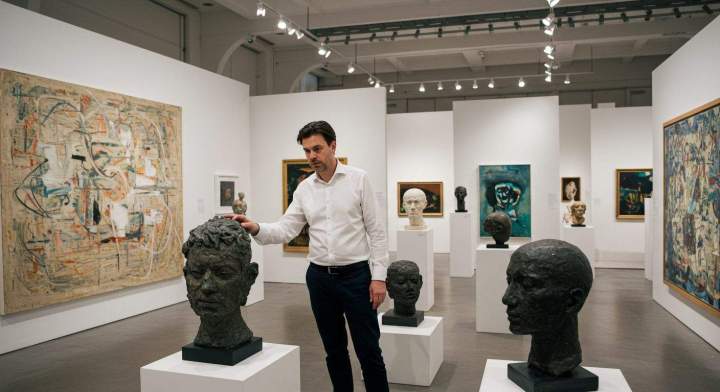How Do Galleries Curate Art For Both Residential And Commercial Clients?
Residential Art Admin / August 9, 2025

Understanding Client Needs
Initial Consultation
The curation process often begins with an in-depth consultation, where galleries engage with clients to understand their specific needs and preferences. For residential clients, this may involve discussions about personal taste, existing decor, and the emotional atmosphere they wish to create in their home. In contrast, commercial clients typically focus on branding, customer experience, and the functional aspects of the space, such as how art can influence foot traffic and client perception.
Defining Objectives
Once the initial consultation is complete, galleries help clients articulate their objectives. Residential clients might aim to create a cozy, inviting atmosphere or showcase their personal style, while commercial clients may prioritize art that enhances brand identity or conveys a particular message. By establishing clear goals, galleries can tailor their curation strategies to meet these aspirations.
Art Selection Process
Theme and Concept Development
Galleries often begin the selection process by developing a cohesive theme or concept tailored to the client’s objectives. For residential projects, this could involve selecting art that reflects the homeowner’s personality, interests, or travel experiences. In commercial settings, themes might revolve around the brand’s mission or the demographic of the clientele. By grounding the selection in a central theme, galleries ensure that the artwork creates a unified story throughout the space.
Diversity in Art Forms
A successful art curation strategy embraces a variety of art forms, including paintings, sculptures, installations and even digital art. For residential clients, galleries might propose a mix of well-known artists and emerging talents to create a unique atmosphere. In commercial spaces, incorporating diverse art forms can stimulate interest and engagement among visitors, enhancing their overall experience.
Balancing Aesthetics and Functionality
In both residential and commercial environments, the balance between aesthetics and functionality is crucial. For homes, art should complement the existing interior design without overpowering it. In commercial spaces, artwork may need to withstand high traffic, be easily maintained, and align with the brand’s identity. Galleries meticulously assess each piece’s suitability, ensuring that the artwork not only looks good but also serves a purpose.
Installation and Display Considerations
Spatial Awareness
The installation process is as vital as the selection of artworks. Galleries must consider the dimensions and layout of the space to optimize the visual impact of each piece. In residential settings, this may involve arranging artwork to create focal points or enhance room flow. For commercial clients, strategic placement can guide customer movement and highlight key areas of interest.
Lighting and Environment
Lighting plays a critical role in how art is perceived. Galleries often advise clients on the best lighting options to enhance the artwork's colors and textures. In residential spaces, natural light can create warmth and depth, while in commercial environments, adjustable lighting may be essential to accommodate different events or times of day. Proper lighting not only amplifies the visual appeal but also preserves the integrity of the artwork.
Long-Term Relationships and Maintenance
Ongoing Engagement
Art curation does not end once the installation is complete. Many galleries maintain relationships with their clients, offering ongoing support and advice on how to care for the artworks. This includes guidance on cleaning, rotating pieces, or even sourcing new artworks that align with changing tastes or environments.
The Importance of Adaptability
Both residential and commercial spaces evolve over time, and galleries recognize the need for adaptability in their curation approach. For residential clients, personal life changes may dictate a shift in decor preferences, while commercial clients may undergo brand revamps or renovations. Galleries that foster flexibility in their curation practices can better serve their clients’ evolving needs.
Successful curation depends on understanding the unique requirements of each space while respecting the artistic intent of the creators. The process involves careful consideration of scale, lighting, traffic flow, and the emotional impact desired in each environment. Work with an experienced gallery curator who can translate your vision into a cohesive artistic narrative that enhances your space.